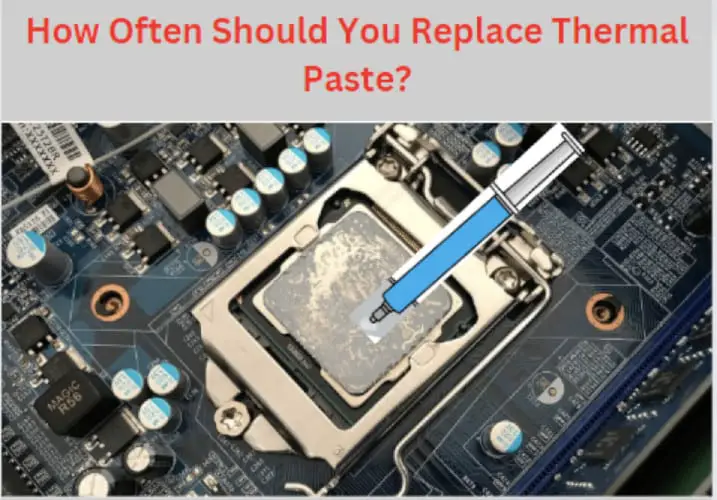Regarding thermal paste, there is yet to be a definitive answer regarding how often it should be replaced. It helps to think of thermal paste as insurance for your computer. If you have a high-end CPU and GPU, replacing the thermal paste every two to three years is probably worth replacing to ensure optimal performance and avoid any potential damage.
If you have a budget CPU and GPU, replacing the thermal paste every few years is unnecessary. Ultimately, it is up to you to decide how often to replace your thermal paste based on your budget and needs.
What Is Thermal Paste?
Thermal paste is a thermally conductive compound used to fill in the gaps between the CPU or GPU and its heatsink. Thermal paste improves heat transfer by providing a more direct path for heat to travel from the hot surface to the cooler surface.
It is important to use the thermal paste to prevent your CPU or GPU from overheating and sustaining damage. When applied correctly, the thermal paste can help to dissipate heat more effectively and prevent overheating.
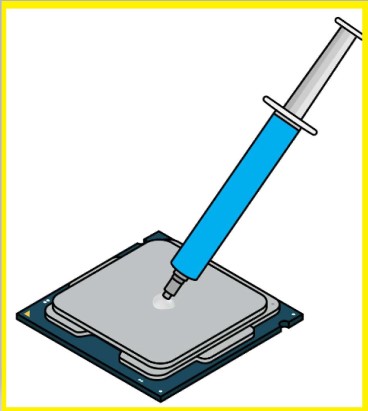
How Does The Thermal Paste Work?
If you are new to the computer world, you may wonder how thermal paste works. Thermal paste is a thick liquid substance that transfers heat away from computer components. It is mostly used to cool the CPU and GPU.
Thermal paste is applied to the top of a CPU or GPU, and a cooling fan or heatsink is placed on top of the paste. The thermal paste helps to conduct heat away from the component and into the cooling device.
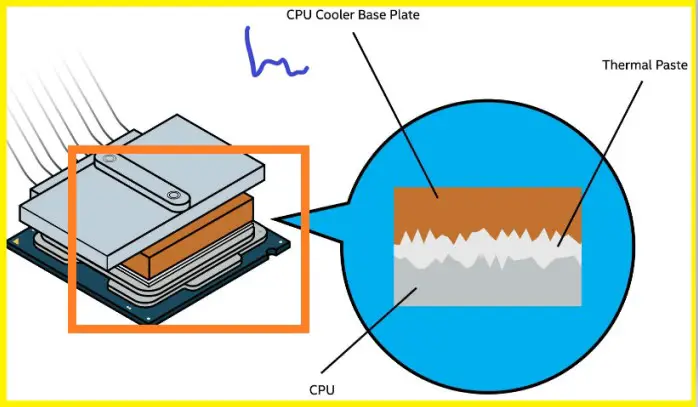
Thermal paste is made from various materials, including metals, ceramics, and diamond dust. The most common kind of thermal paste is made from silicone. Thermal paste is available in multiple thicknesses depending on the needs of the component it will be cooling.
A thinner thermal paste is typically used for smaller components, while a thicker paste is reserved for larger components.
Applying thermal paste can be a bit tricky. Too much paste can cause problems, while too little will not provide adequate cooling. It is important to follow the instructions that come with your thermal paste and to apply the paste evenly to the component. Once the thermal paste is applied, you will need to place the cooling device on top of it and secure it.
Related: Is Thermal Paste Toxic?
Factors That Can Affect Your Thermal Paste
Over time, the thermal paste can dry out or become contaminated, which can degrade its performance. Replacing your thermal paste is a relatively simple and inexpensive way to improve your computer’s cooling and increase lifespan. Here are some factors that can affect your thermal paste:
1. Position Of The PC Tower
If your PC tower is on the floor, there is a greater chance that dust and other particles will enter the case and potentially contaminate the thermal paste. Keep your tower on a desk or other elevated surface.
The airflow in your room can also affect how much dust enters your case – if you have a lot of dust in the air, it’s more likely to settle on your components.
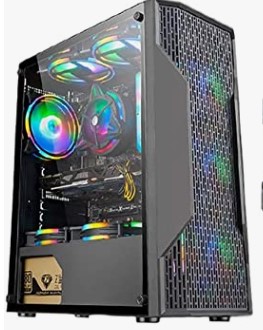
Try to keep your tower in a well-ventilated area, away from sources of dust and debris. When cleaning your PC, avoid disturbing the thermal paste too much. You should ensure that the positioning is not close to other components that can generate heat.
2. Environment Temperature
The warmer your environment, the quicker your thermal paste will dry out. If you live in a hot climate or if your room tends to get warm, you may need to replace your thermal paste more often. Conversely, your thermal paste will last longer if you live in a cold climate or keep your room cool.
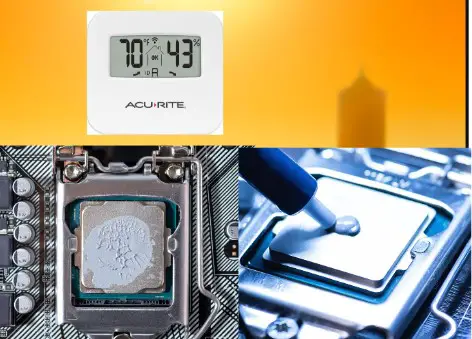
You should also be aware of how hot your CPU gets. If it runs very hot, your thermal paste will break down faster. You may need to replace it more often if your CPU runs hot. So, if you live in a hot climate and have a hot-running CPU, you may need to replace your thermal paste every few months.
3. Frequency Of Use
If you use your computer for gaming or other intensive activities, you will need to replace your thermal paste more often than the average user. The paste can degrade over time due to the high temperatures and may provide less cooling after extended use.
You should check the condition of your paste every few months to ensure it is still effective.
Heavy games and activities place a higher load on your processor, which will, in turn, generate more heat. The increased heat can cause the thermal paste to degrade faster, so it’s important to check it more frequently if you use your computer for gaming or other resource-intensive tasks.
So, if you love gaming and running heavy applications, you need to keep an eye on your processor’s temperature and change the paste as necessary.
4. Quality Of The Paste
Not all thermal pastes are made equal. Some are designed for specific purposes, such as high-performance overclocking, while others are more general purpose. The quality of the paste can also vary greatly.
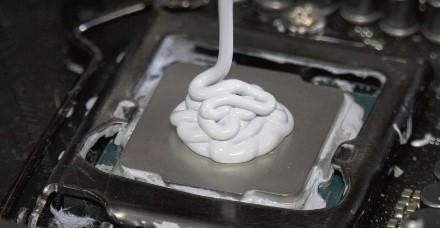
There are a few things to look for when choosing a thermal paste. First, you want to ensure it is compatible with your CPU and heatsink. Second, you want to choose a paste designed for your specific needs. For example, if you are an overclocker, you will want a paste that can handle the extra heat.
Third, you want to make sure the paste is of good quality. This can be difficult to determine without actually using the paste, but there are a few things to look for. Check the ingredients list. Some of the cheaper pastes use lower quality ingredients that don’t conduct heat as well.
Also, you can read the instructions to see which pastes are easier to apply. The more expensive pastes often come with special applicators that make it easier to apply the paste evenly.
5. Disassembling The GPU And CPU
If you need to disassemble your GPU or CPU, avoid disturbing the thermal paste too much. The thermal paste can be quite delicate, and if you’re not careful, you can damage it. If you need to remove the heatsink or other cooling apparatus, be very careful with the thermal paste.
When you put the components back together, ensure the thermal paste is reapplied correctly.
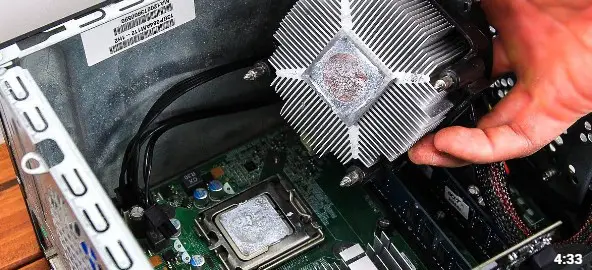
You should also be careful when cleaning your CPU or GPU. Avoid using abrasive materials or cleaners, as these can damage the thermal paste. Instead, use a soft, lint-free cloth dampened with a gentle cleaner. Gently wipe down the surface, careful not to disturb the thermal paste too much.
6. Storage Conditions
Thermal paste can degrade over time, so it’s important to store it properly. The ideal storage conditions are a cool, dry place with low humidity. If you must store it for an extended time, consider using a desiccant packet to keep the environment dry.
You should also avoid storing thermal paste in direct sunlight, as this can cause it to degrade more quickly.
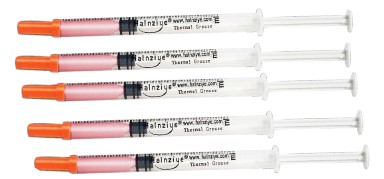
7. Shelf Life
Thermal paste can last several years if stored properly, but it’s always best to use the freshest possible paste for optimal performance. If you have an old tube of paste that’s been sitting in a drawer for a while, it’s probably still good to use, but you may consider buying a new one to be safe.
Thermal paste can be affected by several factors, so it’s important to be aware of them. If careful, you could protect the thermal paste, CPU, or GPU. Be sure to handle the components gently and avoid using abrasive materials. With proper care, you can keep your thermal paste in good condition for a long time.
Related: Thermal Paste on CPU Pins
Frequently Asked Questions
What Happens If You Don’t Replace Thermal Paste?
When your CPU isn’t properly maintained, it can end up causing some serious problems. Not replacing the thermal paste regularly can have disastrous consequences, including massive performance issues and even fire damage in extreme situations.
If you fail to replace the thermal paste, your CPU will overheat, and the CPU’s components could melt together, ultimately leading to its failure. This is because without the paste to act as a heat conductor between the case fan and heatsink, heat builds up extremely quickly.
These issues can be avoided by simply learning how to check and replace the thermal paste regularly.
Does Thermal Paste Improve FPS?
Yes, the thermal paste can help improve FPS because it helps transfer heat away from the CPU and GPU, leading to better overall performance. However, it is important to note that many factors can affect FPS, so thermal paste may not cure every situation.
Ultimately, it is up to the user to decide if thermal paste is worth the investment.
Does Thermal Paste Matter For Gaming?
Yes, thermal paste does matter for gaming. If you want your games to run smoothly and avoid any potential overheating issues, it’s important to use a quality thermal paste. There are a lot of different thermal pastes on the market, so it’s important to do your research and choose one that will work well for your specific needs.
A good thermal paste can make a big difference in your gaming experience, so it’s definitely worth the investment.
Can I Use A 10-Year-Old Thermal Paste?
You can technically use 10-year-old thermal paste, but more recent formulas may be more effective. Thermal paste degrades over time, so using more than a few years old thermal pastes is not recommended. If you use old thermal paste, apply a thin layer so it doesn’t negatively affect your computer’s cooling performance.
How Do You Know If Thermal Paste Is Bad?
There are a few ways to tell if your thermal paste is bad. One way is to look at the color of the paste. If it is discolored, it may be time to replace it. Another way to tell if the paste is bad is to feel the texture of the paste. If it feels gritty, it may be time to replace it.
Finally, if the paste is not applying evenly to the CPU, it may be time to replace it.
Does Reapplying Thermal Paste Improve Performance?
Yes, reapplying thermal paste can improve performance. Thermal paste is responsible for filling the small gaps and spaces between your CPU and heatsink, and over time it can dry out, harden, or generally become less effective. Reapplying fresh thermal paste can help improve cooling and performance.
Is 1 Gram of Thermal Paste Too Much?
1 gram of thermal paste is a little. It is the ideal amount to use for the best results. Thermal paste should be applied in a thin layer, and 1 gram will provide enough coverage for most applications. If your thermal paste is not spreading evenly, you can use it slightly less.
However, using too little thermal paste can result in poor heat transfer and may decrease the performance of your cooling system. Therefore, it is generally best to use the recommended amount of thermal paste.
Can I Use Aluminium Foil As Thermal Paste?
Thermal paste fills a fragile gap between a CPU and its heat sink, providing better thermal conductivity than the air that would otherwise be present. If a heat sink is not properly seated on a CPU, air pockets can form and disrupt this conduction, leading to overheating.
While aluminum foil can conduct heat, it’s not ideal for this purpose because it’s not very thermally conductive and can be easily damaged. If you’re desperate, though, it’s better than nothing. Just be sure to use a very thin layer and apply it evenly.
What Happens If I Don’t Apply Thermal Paste Often Enough?
If you don’t apply thermal paste often enough, your computer could overheat and shut down. The thermal paste helps conduct heat away from the processor and into the heat sink, which helps keep your processor cool. If you need more thermal paste, or if it’s not applied evenly, heat can build up and cause your computer to overheat.
How often you apply thermal paste depends on how much you use your computer and how demanding the applications you use are. If you use your computer for light tasks like browsing the web or checking email, you might only need to apply thermal paste once a year.
However, if you use your computer for gaming or other demanding tasks, you might need to apply thermal paste every few months.
Can CPU Overheat Without Thermal Paste?
Yes, a CPU can overheat without thermal paste. If there is insufficient or no thermal paste between the CPU and the heat sink, the heat generated by the CPU will not be properly dissipated, and the CPU will overheat. Thermal paste ensures proper heat transfer from the CPU to the heat sink.
Conclusion
Your CPU is one of the most important components in your computer, and it needs to be properly cooled for it to function properly. The thermal paste that helps transfer heat away from the CPU can degrade over time, so replacing it every few years is important. If you’re a heavy user or gamer, you may need to replace it more often.
Consult your computer’s manual or contact the manufacturer if you need help with how often to replace your thermal paste. Thermal paste is an important part of keeping your CPU cool, so it’s important to replace it as needed.

